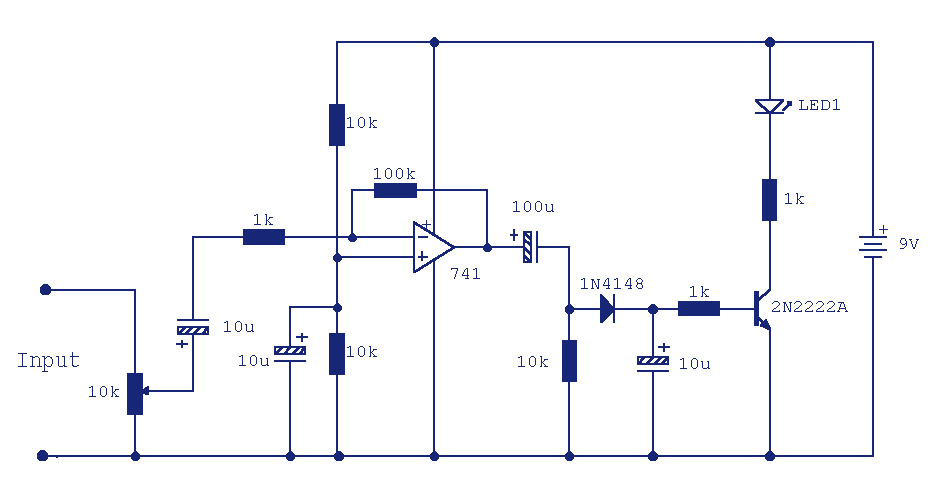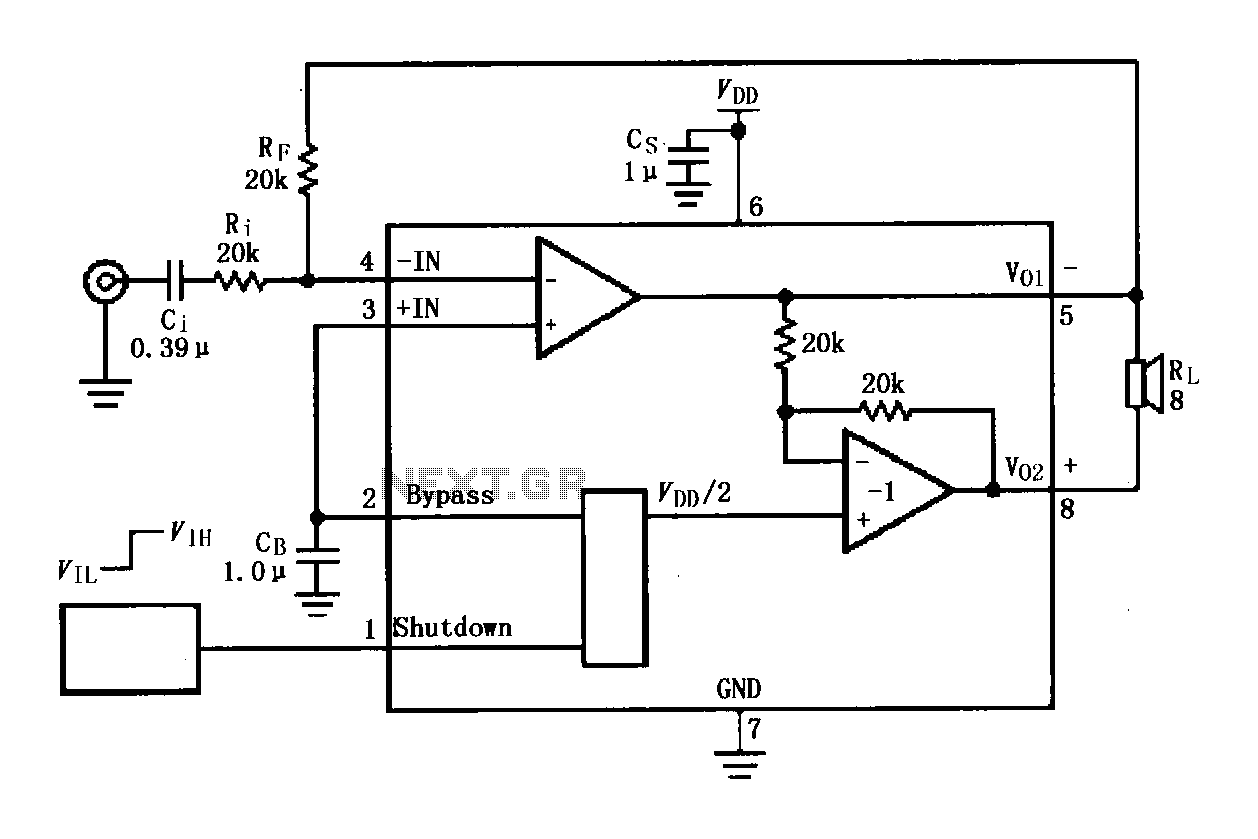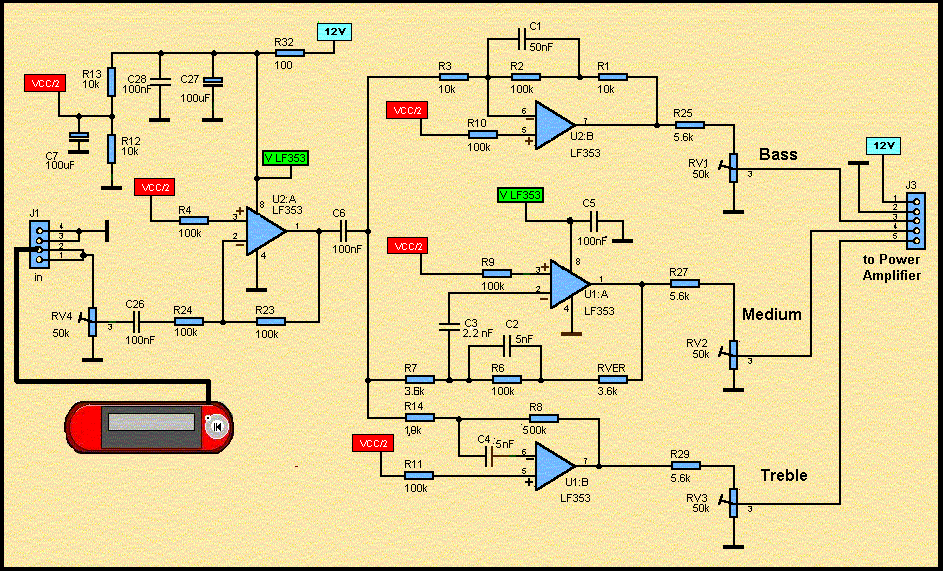
Audio peak Indicator

This circuit can be used to remotely monitor a loudspeaker, alarm, or audio source for presence of an audio waveform. It can also be directly connected across loudspeaker terminals used as a peak indicator. If you need to monitor some audio signal at a location that is either soundproof or too far away to actually hear the signal then you can use a circuit similar to this one. A remote indication that the audio source is active is provided visually, here in the form of a LED. Referring to the above circuit, the 10k preset is a level control which should be adjusted so that when the source (audio signal or alarm) is producing the desired amount of noise, the LED lights. The input stage is an inverting x100 amplifier made with
The described circuit functions as an audio waveform detector and indicator, suitable for applications where audio signals need to be monitored from a distance or in environments where sound cannot be heard. The circuit design incorporates a few key components to achieve its functionality.
At the core of the circuit is an operational amplifier (op-amp) configured as an inverting amplifier with a gain of 100. This configuration allows for the amplification of low-level audio signals, making it possible to detect the presence of an audio waveform. The input stage receives the audio signal from the loudspeaker terminals, where it can be directly connected.
The use of a 10kΩ potentiometer as a level control is crucial in this design. This component allows for the adjustment of the sensitivity of the circuit, enabling the user to set the threshold at which the LED indicator will illuminate. When the audio signal exceeds this threshold, the amplified output from the op-amp will activate the LED, providing a visual cue that an audio signal is present.
The LED serves as a simple yet effective indicator, providing immediate feedback to the user regarding the status of the audio source. The circuit should be powered with an appropriate voltage supply that matches the specifications of the op-amp being used, ensuring reliable operation.
Additional components may include resistors to set the gain of the op-amp, capacitors for filtering to prevent noise interference, and possibly a diode to protect against reverse polarity. Overall, this circuit is an efficient solution for remote audio monitoring, making it suitable for various applications in security systems, sound engineering, and audio testing environments.This circuit can be used to remotely monitor a loudspeaker, alarm, or audio source for presence of an audio waveform. It can also be directly connected across loudspeaker terminals used as a peak indicator. If you need to monitor some audio signal at a location that is either soundproof are too far away to actually hear the signal then you can use a circuit similar to this one.
A remote indication that the audio source is active is provided visually, here in the form of a LED. Referring to the above circuit, the 10k preset is a level control which should be adjusted so that when the source ( audio signal or alarm ) is producing the desired amount of noise, the LED lights. The input stage is an inverting x100 amplifier made with 🔗 External reference
The described circuit functions as an audio waveform detector and indicator, suitable for applications where audio signals need to be monitored from a distance or in environments where sound cannot be heard. The circuit design incorporates a few key components to achieve its functionality.
At the core of the circuit is an operational amplifier (op-amp) configured as an inverting amplifier with a gain of 100. This configuration allows for the amplification of low-level audio signals, making it possible to detect the presence of an audio waveform. The input stage receives the audio signal from the loudspeaker terminals, where it can be directly connected.
The use of a 10kΩ potentiometer as a level control is crucial in this design. This component allows for the adjustment of the sensitivity of the circuit, enabling the user to set the threshold at which the LED indicator will illuminate. When the audio signal exceeds this threshold, the amplified output from the op-amp will activate the LED, providing a visual cue that an audio signal is present.
The LED serves as a simple yet effective indicator, providing immediate feedback to the user regarding the status of the audio source. The circuit should be powered with an appropriate voltage supply that matches the specifications of the op-amp being used, ensuring reliable operation.
Additional components may include resistors to set the gain of the op-amp, capacitors for filtering to prevent noise interference, and possibly a diode to protect against reverse polarity. Overall, this circuit is an efficient solution for remote audio monitoring, making it suitable for various applications in security systems, sound engineering, and audio testing environments.This circuit can be used to remotely monitor a loudspeaker, alarm, or audio source for presence of an audio waveform. It can also be directly connected across loudspeaker terminals used as a peak indicator. If you need to monitor some audio signal at a location that is either soundproof are too far away to actually hear the signal then you can use a circuit similar to this one.
A remote indication that the audio source is active is provided visually, here in the form of a LED. Referring to the above circuit, the 10k preset is a level control which should be adjusted so that when the source ( audio signal or alarm ) is producing the desired amount of noise, the LED lights. The input stage is an inverting x100 amplifier made with 🔗 External reference





